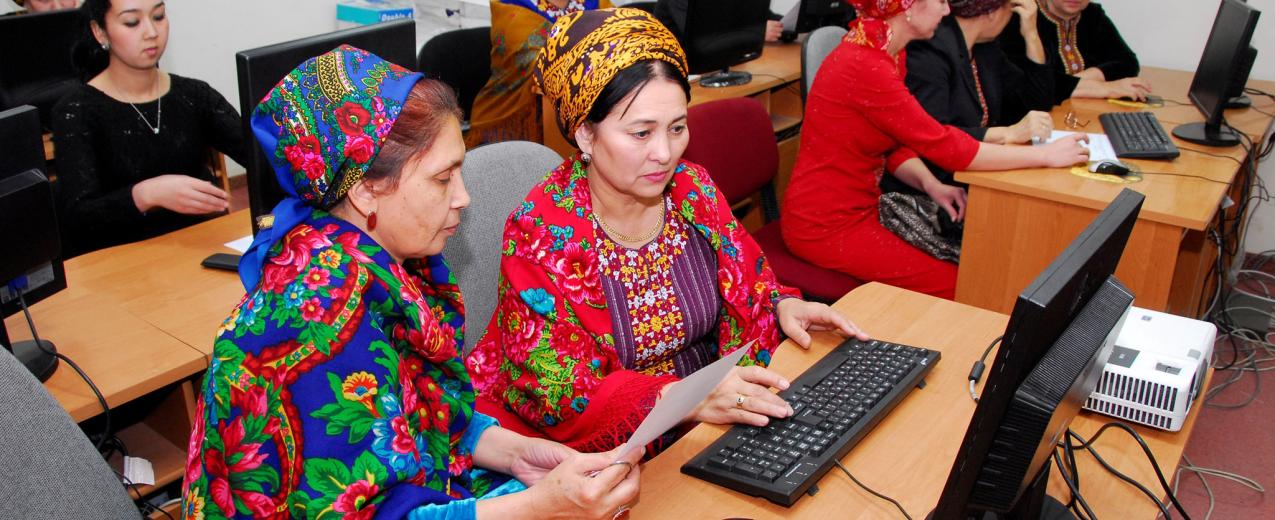
Quantitative tools and approaches
Many of the questions in the qualitative and mixed methods tools section can be integrated within quantitative approaches. This page focuses on using secondary quantitative datasets and on survey tools for exploring social and gender norms.
Tools by topic
In recent years, there have been growing efforts to develop more focused tools for generating quantitative data specifically measuring norms, through questions about what respondents think is typical or accepted behaviour in their communities. The table below outlines surveys and modules exploring gender norms by topic.
Thematic tools and surveys for exploring gender norms
Three resources that bring together tools and methods for quantitative measurement of gender and social norms include:
- ALIGN’s webinar on innovations in quantitative measurement of gender norms, which covers a range of thematic areas
- Videos from LINEA’s 2020 conference, which focuses on measuring norms related to sexual exploitation
- Evidence-based Measures of Empowerment for Research on Gender Equality (EMERGE). In addition to the tools highlighted in the table above, EMERGE’s gender role norms collection features surveys and survey modules that explore aspects of gender norms including intimate partner violence, early marriage, masculinities, and labour market roles.
Measuring diffusion of norms and norm change
Another area of recent innovation is in the spread of new norms. This often involves analysis of social networks. LINEA’s webinar recording explains how to research social networks to understand reference groups and their influence on social norms, and a webinar by the Learning Collaborative also discusses some participatory techniques for understanding reference groups. Some recent studies that showcase the tools and approaches they have used include:
- Holly Shakya et al. (2020)’s study of influences on adolescent childbearing in Honduras. The online supplement lists questions used to understand social networks.
- Bettina Shell-Duncan et al.’s (2018) study of the influence of men’s social networks on FGM/C in Senegal.
Using secondary data
Large-scale international surveys, such as Demographic and Health Surveys, Multiple Indicator Cluster Surveys and the World Values Survey that have been carried out for the last twenty years or longer now have substantial datasets with data on attitudes and behaviour or practices. These can serve as proxies for norms. Samman’s (2018) Guide to quantitative measurement of gendered social norms, and Pereznieto’s (2015) What can internationally comparable quantitative data tell us about how gender norms are changing? outline some of the measures used in these and other surveys and their potential and limitations as measures of norms. Some recent studies that have used World Values Survey data to illuminate changes in gender norms include:
- ALIGN (2020) Gender, power and progress: how norms change
- UNDP’s (2020) Tackling social norms: a game changer for gender equality
- Alpin et al. (2019) Gains and gaps: perceptions and experiences of gender in Africa
Regional Barometer Surveys (e.g. Afrobarometer, Latinobarometro) are also increasingly including questions that measure norms too.
Indices of norm change
The growing interest in quantitative measurement of social and gender norms has led to increased investment in indices that either focus entirely on changing norms, or include measures of norms as a dimension that contributes to an overall index. Samman’s (2018) guide to the quantitative measurement of gender norms, and this short ODI guide to gender indices provide an overview of issues related to using indices to understand changing gender norms. In brief, indices such as those listed below can provide a top-level indication of whether norms are changing. They typically rely on secondary data from publicly available quantitative survey data on attitudes. Others, such as the Social Institutions and Gender Index (SIGI) also include complementary measures of informal and formal laws, and practices. The table below lists some key indices that draw on attitudinal data as a proxy for norms. It does not include indices that draw only on outcome data.
Some indices that draw on attitudinal data to give an indication of norm change
| Index | Developer | Data sources |
|---|---|---|
Gender and Social Norms Index (GSNI) (see also this ALIGN blog) |
UNDP | World Values Survey |
| Social Institutions and Gender Index (SIGI) (see also this ALIGN note) | OECD | World Values Survey, Barometer Surveys, specialised surveys e.g. ILO-Gallup attitudes to women and work survey |
Index of Child Marriage Acceptability - Asia |
Plan International | Primary data collected by PLAN international |
Big data
In recent years, there has been growing interest in using social media to monitor changing norms. This is still a new field, but some emerging studies provide insights and guidance. Measure Evaluation’s (2018) study analyses representation of gender-based violence and ‘sugar daddy’ relationships on Twitter accounts from ten southern and eastern African countries and discusses in detail the approaches used. A study in 2018, supported by Data 2x, examines insights on norms around gender-based violence using Twitter and YouTube content in Arabic. Breakthrough Research’s (2020) brief explains social listening: an approach to interpreting social media data, in this case to understand changing norms, attitudes and behaviour around sexual and reproductive health.
